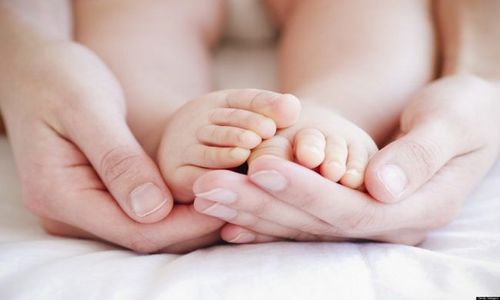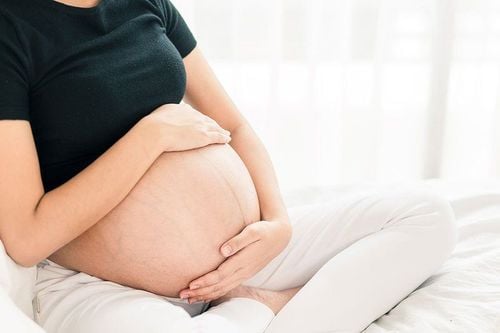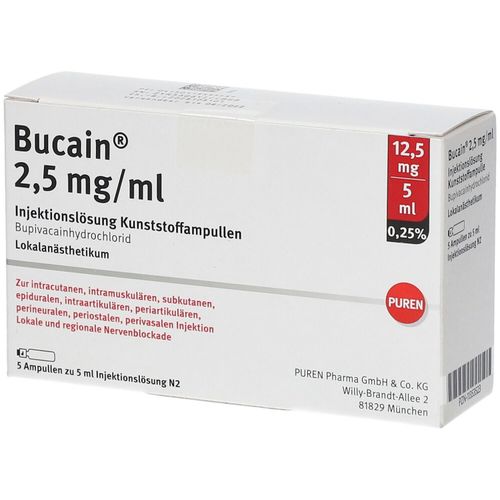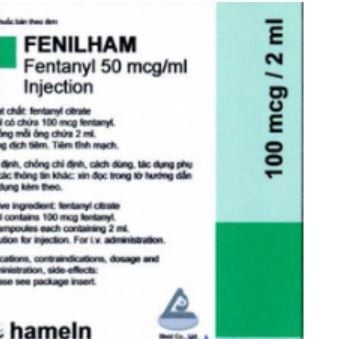This is an automatically translated article.
The article was professionally consulted by BSCK I Nguyen Duc Tho - Anesthesiologist - Anesthesiology Department - Vinmec Central Park International HospitalSpinal anesthesia is a regional anesthetic technique performed in flatfoot surgery, bulging foot surgery, to temporarily inhibit nerve conduction through the spinal cord, thereby meeting the requirements of anesthesia and reducing pain during surgery.
1. Flat foot surgery, convex feet
Flat feet is a common deformity in which the soles of the feet are flat and not recessed as they should. This malformation causes serious damage to the spinal nerves and affects the later development of the patient. On the other hand, protrusion of the foot can be attributed to a vertical talus deformity. At this time, the middle part of the patient's foot is protruding down, while the front and back of the foot are facing up.
In rare cases, severe deformities in a developing child require surgical intervention to relieve pain, stabilize the foot, and improve and restore foot function.
The purpose of flatfoot surgery is to return the correct position and relationship between the bones in the foot. Often tendons or ligaments will need to be stretched to allow movement of the bones, as well as small nails and casts. To relieve pain during and after surgery for flat feet and bulging feet, doctors often apply spinal anesthesia.
2. When is spinal anesthesia needed?
Indications to perform the technique of injecting local anesthetic into the subarachnoid space will help anesthetize some surgeries, as well as reduce postoperative pain.
Contraindications for spinal anesthesia in the following cases:
● The patient refuses;
● People who are allergic to local anesthetics;
● The area to insert the anesthetic needle has become infected;
Circulatory volume is deficient, undercompensated or in shock;
● Serious blood clotting disorder;
● Not enough time to stop using anticoagulants;
Mitral stenosis and/or tight aortic valve;
Increased intracranial pressure.
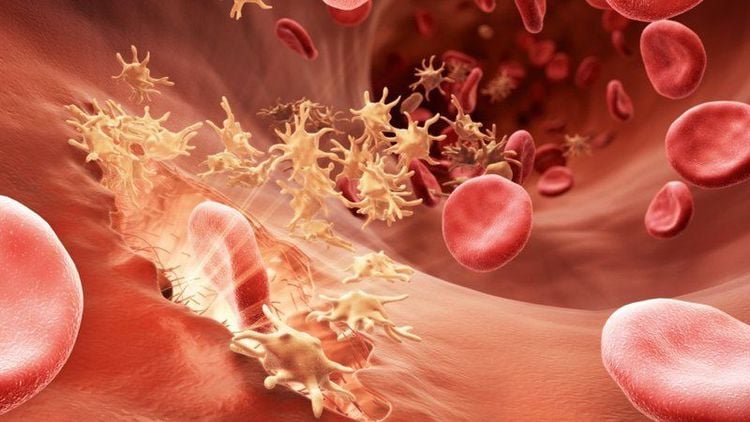
Bệnh nhân rối loạn đông máu không được chỉ định gây tê tủy sống
3. Preparation steps
3.1. The person performing the technique
Including a team of medical doctors and nurses specializing in anesthesiology and resuscitation.
3.2. Vehicle
First aid and monitoring equipment includes:
● Resuscitation equipment: Oxygen source, Ambu balloon, mask, intubation equipment, anesthesia machine with breathing apparatus, electric shock machine, suction machine, etc.;
● Circulatory Resuscitation: Fluid, ephedrine, adrenaline, etc.;
● Anticonvulsants: Barbituric family, benzodiazepines, muscle relaxants, intralipid 10-20% etc;
● Routine monitoring: Electrocardiogram, blood pressure, oxygen saturation, breathing rate...
In addition, anesthetic and anesthetic tools and equipment are also required, including:
● Needles and syringes sizes;
● Gloves;
● Sterile gauze;
Pince;
● Antiseptic alcohol;
Sterile hole towel;
● Spinal anesthesia needles of different sizes...
The anesthetics to be prepared are bupivacaine, levobupivacaine or ropivacaine. Can be combined with drugs of the morphine family. Dosage is based on the patient's weight, height and body condition, specifically:
● Reduce dose for people > 60 years old, anemic, or pregnant women.
3.3. Patient
● Pre-operative examination;
● Explain to the patient to cooperate with anesthesia;
Sanitize the spinal anesthesia area;
● If necessary, the patient can be sedated the night before the surgery.
In addition, medical staff also need to check the patient's medical records according to the general regulations of the Ministry of Health.
4. Procedure
After checking the patient's record and fully examining the patient, the doctor will perform spinal anesthesia techniques.
4.1. Prevention of hypotension
By placing an intravenous line and giving fluids from 5 to 10 ml/kg for adults.
4.2. Posture
● Sitting position: The patient sits with his back arched, his head bowed so that his chin touches his chest, his legs are stretched out on the operating table or his feet are on the chair;
● Lying position: The patient lies on his side with his back bent, his knees close to his abdomen, and at the same time his chin rests on his chest.
4.3. Performed by the doctor
● Wear a hat;
● Wear a mask;
Wash your hands;
● Wear a surgical gown;
● Wear sterile gloves.
After wearing full protective gear, the doctor will disinfect the needle puncture area 3 times with an antiseptic solution and then cover the sterile hole with a towel.
4.4. Spinal anesthesia technique
● Midline: Puncture the space between 2 vertebrae, the usual puncture site is the L3-L4 or L4-L5 vertebrae (the most curved place of the spine);
● Or Lateral Line: Poke 1-2cm from midline, direct the needle into the midline, up and out;
● Aim the bevel of the needle parallel to the patient's spine;
● Insert the needle until a sensation of loss of resistance is felt as the needle passes through the sclera;
● Check, if cerebrospinal fluid is seen, turn the bevel of the needle towards the patient's head and inject local anesthetic.
5. Follow up
● Vital signs, including: Sensation, heart rate, electrocardiogram, arterial blood pressure and capillary oxygen saturation index (SpO2);
● Degree of sensory and motor blockade (prevents pain);
Unintended side effects of spinal anesthesia.
The patient can only be moved out of the recovery room when the following criteria are met:
● No hemodynamic and respiratory disorders;
● Full recovery of movement;
Level of sensory block below T12 (below the inguinal fold).
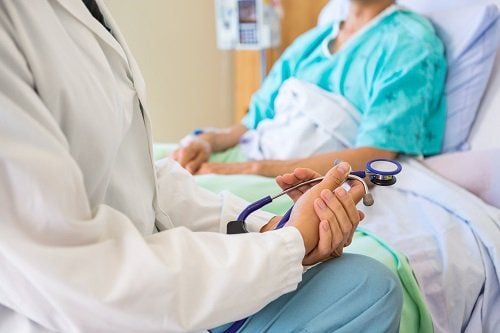
Sau quá trình phẫu thuật người bệnh cần được theo dõi chặt chẽ
6. Complications and treatment
6.1. Drug-induced complications
● Allergies, anaphylaxis
Although rare with new generation local anesthetics, there are also cases where patients are allergic and anaphylactic to local anesthetics. At this time, the doctor will handle it by stopping the use of local anesthetics and applying the anti-anaphylactic regimen of the Ministry of Health.
● Anesthesia poisoning
If the wrong anesthetic is injected into the blood vessels, it will cause poisoning. When this happens, it is necessary to stop using anesthetics, at the same time anticonvulsants, give first aid respiratory - circulatory resuscitation. If poisoning with local anesthetics bupivacaine and ropivacaine, intralipid infusion.
6.2. Accidents caused by technology
● Hypotension, bradycardia: Treat with vasopressors such as ephedrine, adrenaline, atropin and fluid resuscitation;
● Headache: Make the patient lie motionless, give enough fluids, use pain relievers and, if necessary, patch the dura with autologous blood (Blood Patch);
● Nausea and vomiting: control blood pressure, take antiemetics;
● Urinary retention: Apply warmth and, if necessary, catheterize the bladder;
● General spinal anesthesia: First aid respiratory - circulatory resuscitation;
● Other complications (Hematoma around the spinal cord, spinal cord injury, ponytail syndrome, meningoencephalitis...): Need further consultation and exploration to determine the damage as well as how to manage;
Anesthesia failed: Switch to anesthesia.
Spinal anesthesia is indicated for analgesia or analgesia for orthopedic surgery from the pelvis to the lower extremities, including flat foot surgery and protrusion foot surgery. The surgical approach will depend on the specific lesion. Congenital foot deformities after surgery usually give good results, but the patient still needs to be monitored throughout the development.
Spinal anesthesia is a commonly used method today, but not everyone can perform this procedure, especially for children who have flat foot surgery, surgery on convex feet. Therefore, you should go to reputable medical facilities to perform a pre-surgery examination.
Currently, Vinmec International General Hospital has used spinal anesthesia in surgery, surgery, treatment, .. to help patients feel no pain and minimize complications compared to with other anesthetic methods. Especially, with a system of modern and standard machinery and a team of qualified and experienced doctors and nurses, we will bring the best results to our customers.
Customers can directly go to Vinmec Health system nationwide to visit or contact the hotline here for support.





